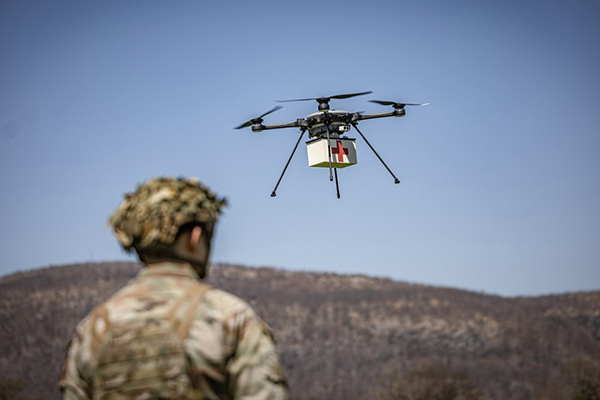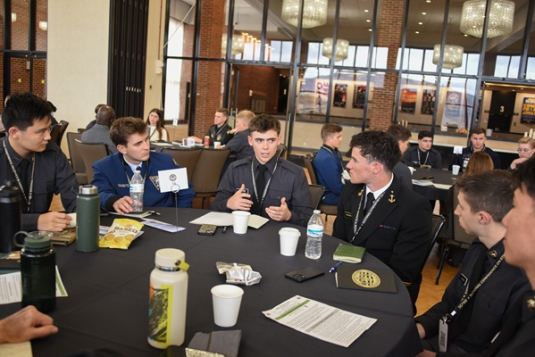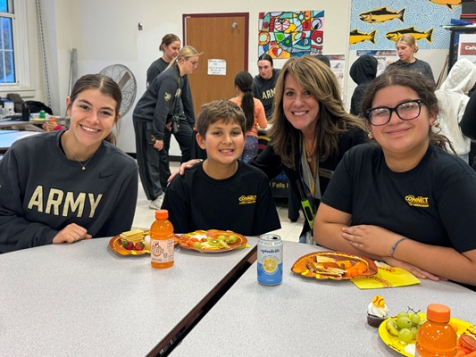A team of cadets supported by researchers from the Robotics Research Center (RRC) is researching drone technology to improve medical resupply operations in difficult and austere environments. Guided by Robotics Research Engineer and Project Advisor Jordan Beason, the effort originated from an operational request by Keller Army Community Hospital to deliver medication autonomously to remote training areas where connectivity is limited and terrain is challenging.
“The project was initially proposed as a research opportunity for EECS cadets,” said CDT Anant Sabata ’27, a computer science major who has worked on the project since the previous semester. “Keller approached EECS saying, ‘Hey, we want a drone to take medicine from Keller to (USMAPS) so we don’t have to use Humvees and manpower.’ From there, we broke the project down—platform, tech, and policy—to achieve that goal.”
The project quickly gained momentum due to its immediate practical applications. Beason explained that even in peacetime, delivering medicine to locations like Camp Buckner presents major logistical challenges due to rugged terrain and weak cell coverage.
“Even just in a conventional setting, delivering medicine out there—where USMA owns two zip codes, limited cellphone connection, insane terrain—you’re already running into problems,” Beason said. “Now imagine doing that in a combat scenario.”
From the beginning, cadets were immersed in the development process, not just system deployment. As part of the foundational training, they constructed drones from scratch using carbon fiber frames, motors, and components sourced online.
“Our first project with them last semester was to have them build a drone from the ground up,” Beason said. “Carbon fiber frame, motors, and other parts just from vendors online.”
That hands-on experience was key to giving cadets a deep understanding of drone mechanics before they transitioned to more advanced, autonomous platforms. By the end of the semester, cadets weren’t just piloting drones—they were programming them with GPS waypoint missions for fully autonomous navigation. Alongside engineering challenges, cadets tackled complex policy and compliance issues. The team initially worked on a custom-built drone, but pivoted to a contracted platform to expedite the airworthiness approval process. Gaining approval to operate the drone on campus required senior-level authorization. The cadets had to draft and present a full air mission brief to leadership in Taylor Hall. The cadets also viewed the project as a learning ground for the roles junior officers will take on in tomorrow’s battlefield—balancing innovation, regulation, and team leadership.
CDT Mason Skeeters ’26 emphasized the value of interdisciplinary collaboration and leadership under real constraints.
“I’m not a tech guy—I’m a DSS major—but we learned to work as a team, speak each other’s languages, and solve a real-world problem,” he said. “That’s what being a future leader is about.”
With each successful flight test and cleared checkpoint, the team inches closer to enabling a future where autonomous logistics could save lives in combat zones and disaster areas alike.
“We started with a question: how do we get medicine from point A to point B?” the team’s tech lead said. “Everything—policy, tech, mission design—came together to answer that. That’s what innovation in the Army looks like.”
The cadets presented their work at the 2025 West Point Projects Day Research Symposium, where faculty, military leaders, and industry partners learn how emerging technology can meet real operational needs through academic collaboration and hands-on experimentation.
Cadets develop projects through their work in Academic Individual Advanced Development (AIAD) opportunities, research projects, and other academic endeavors—activities that would not be possible without donors supporting the Margin of Excellence at West Point.
The excerpt and image were taken from https://www.army.mil.




